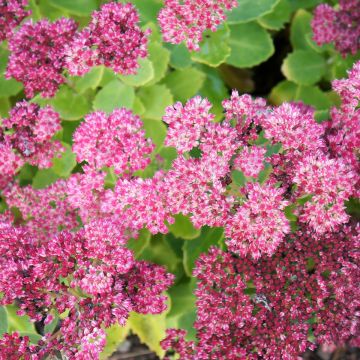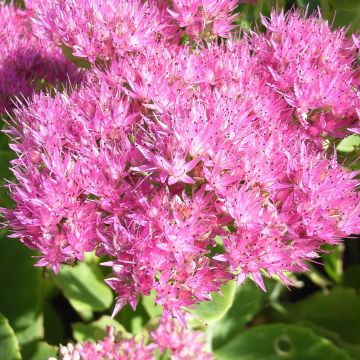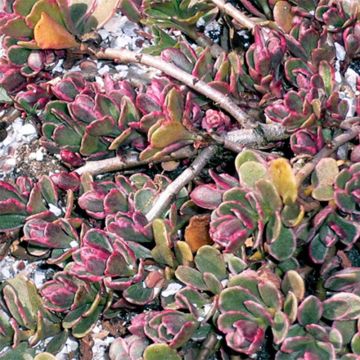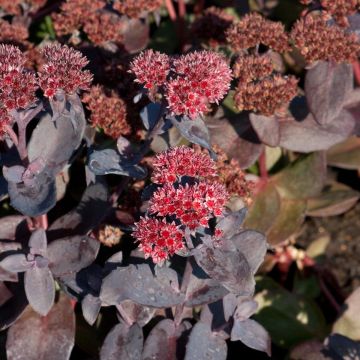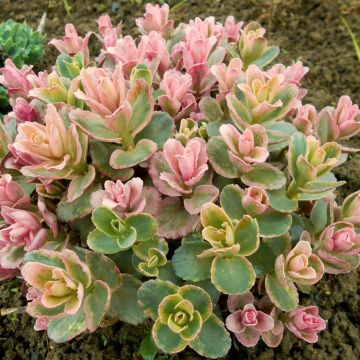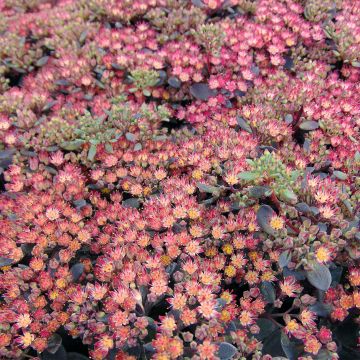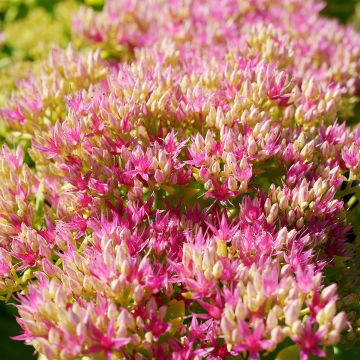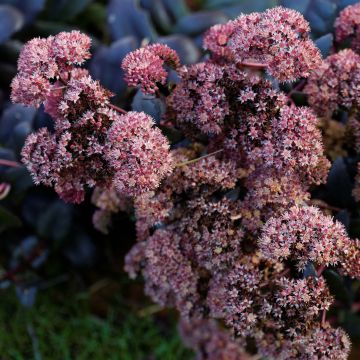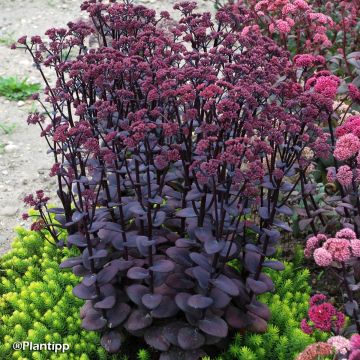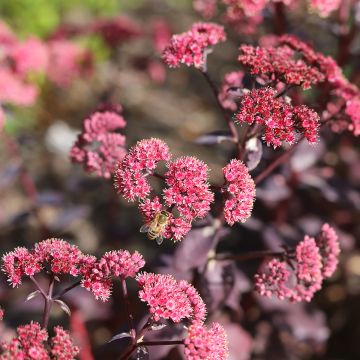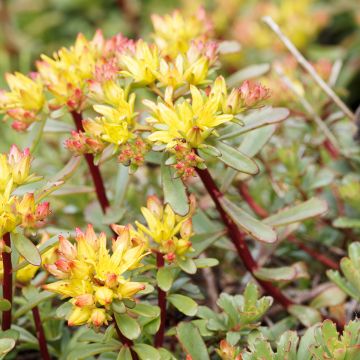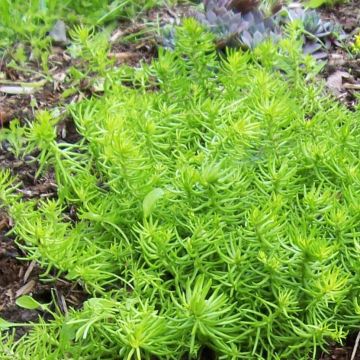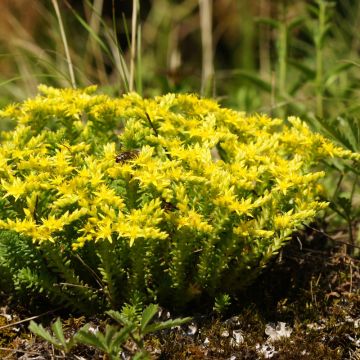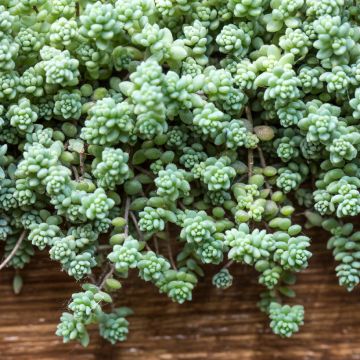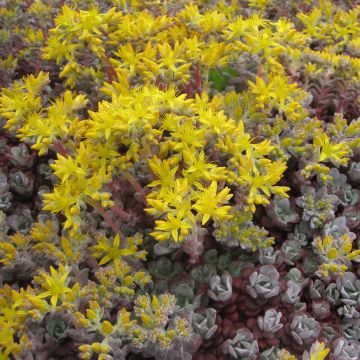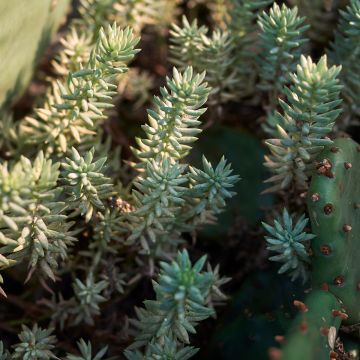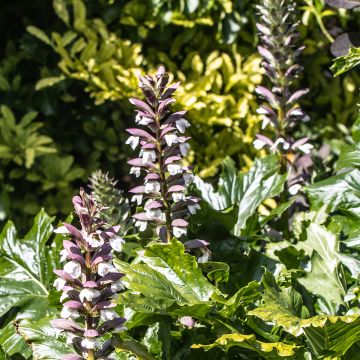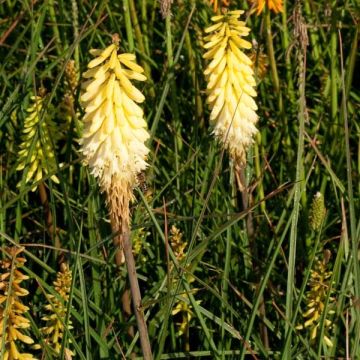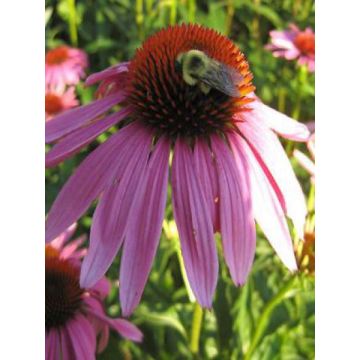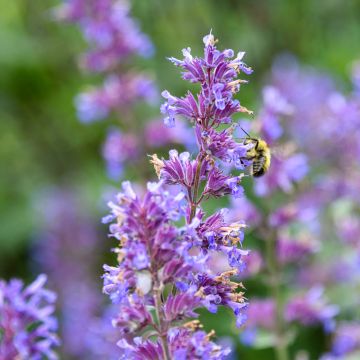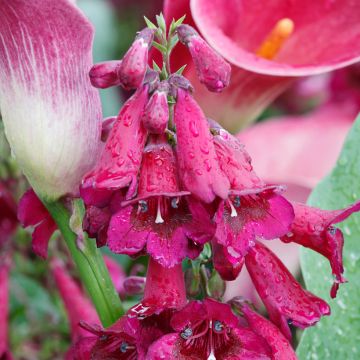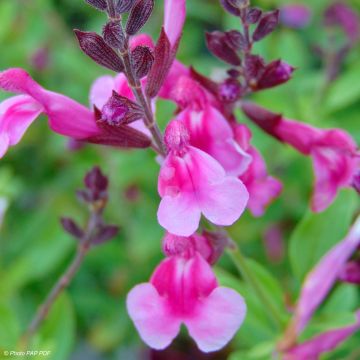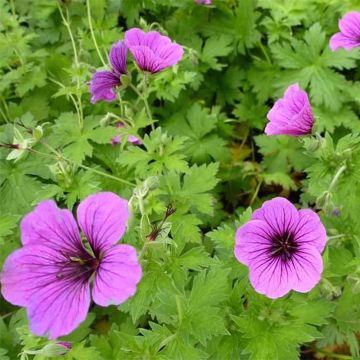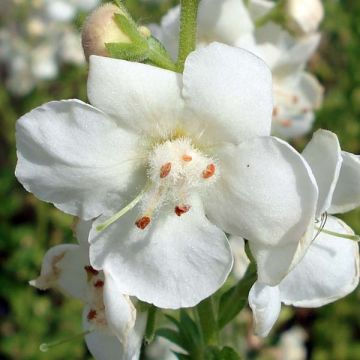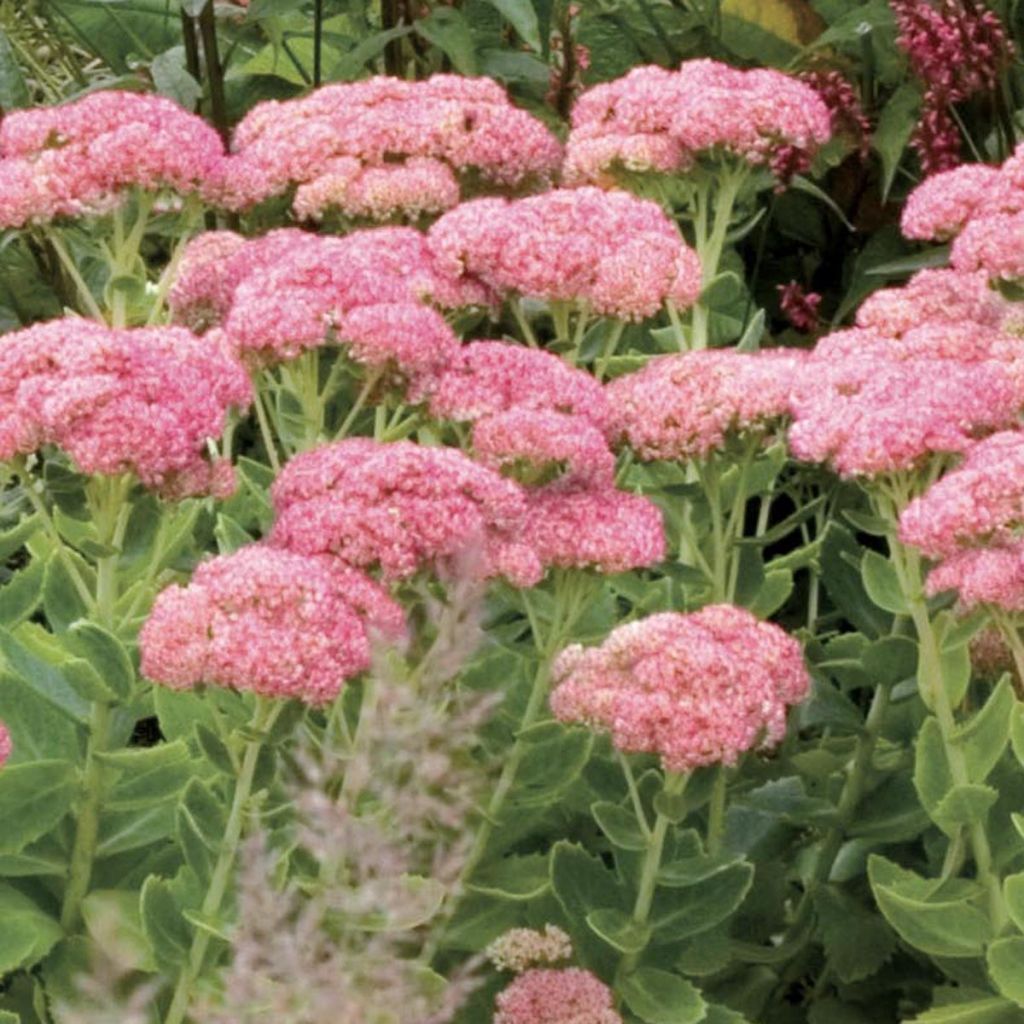

Sedum spectabile Septemberglut - Autumn Stonecrop
Sedum spectabile Septemberglut - Autumn Stonecrop
Sedum spectabile Septemberglut
Autumn Stonecrop, Ice plant, Showy Stonecrop, Butterfly Stonecrop
A promising first flowering in this summer of 2019: looking forward to seeing its development next year (currently in a pot, intended to be planted in the ground later). The pollinators have enjoyed it.
Arnaud, 24/11/2019
Why not try an alternative variety in stock?
View all →This plant carries a 12 months recovery warranty
More information
We guarantee the quality of our plants for a full growing cycle, and will replace at our expense any plant that fails to recover under normal climatic and planting conditions.
From €5.90 for pickup delivery and €6.90 for home delivery
Express home delivery from €8.90.
Does this plant fit my garden?
Set up your Plantfit profile →
Description
Sedum spectabile 'Septemberglut', also known as autumn stonecrop, is a succulent perennial with fleshy roots. From late summer to autumn and until the first frosts, it produces large flattened raspberry pink inflorescences. Butterflies adore this carefree plant, which adds charm to the late season. It is suitable for dry soils and requires very little maintenance.
Sedum spectabile 'Septemberglut', sometimes known as 'September Glow', belongs to the Crassulaceae family. It is one of many cultivars derived from S. spectabile, which is native to China and Korea. It forms compact, upright, spreading clumps up to 50cm (20in) in height and spreading over 40cm (16in). It has a rapid growth rate. Flowering takes place as early as September, and ceases at the first frost. The inflorescences, in flat, dense terminal cymes, reach 15cm (6in) in diameter. They are composed of tiny dark pink-purple flowers that make up nectar-rich and honey-bearing false umbels. Herbaceous stems emerge from thick and fleshy deciduous foliage. The glaucous green leaves are 8cm (3in) long, flat and oval and toothed on the upper half.
This plant is perfect for gardens with lean soil. It is a drought resistant plant. Pair it with grasses and plants with grey foliage that often accept the same harsh living conditions. You can create an unforgettable scene by pairing it with asters or fuchsias. Its magnificent sculptural appearance works well in containers. It is also an excellent flower for dried or fresh floral bouquets.
In the past, Sedum acre was used as a diuretic and purgative. Sedum album was used for canker sores. The main use of sedum was for the treatment of burns, cuts, haemorrhages, and corns.
Report an error about the product description
Sedum spectabile Septemberglut - Autumn Stonecrop in pictures
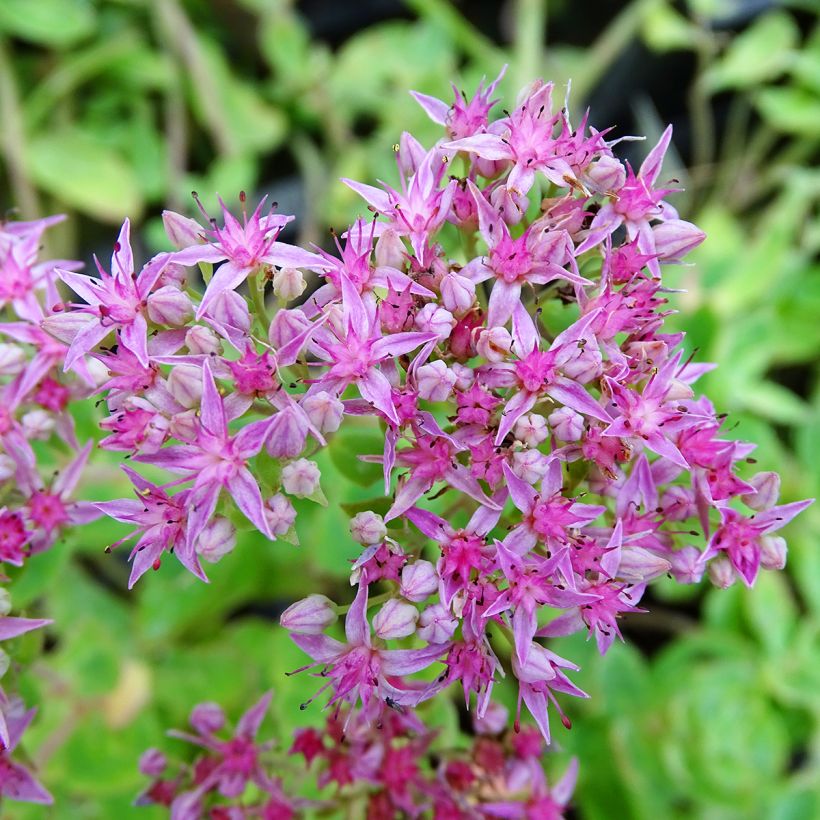

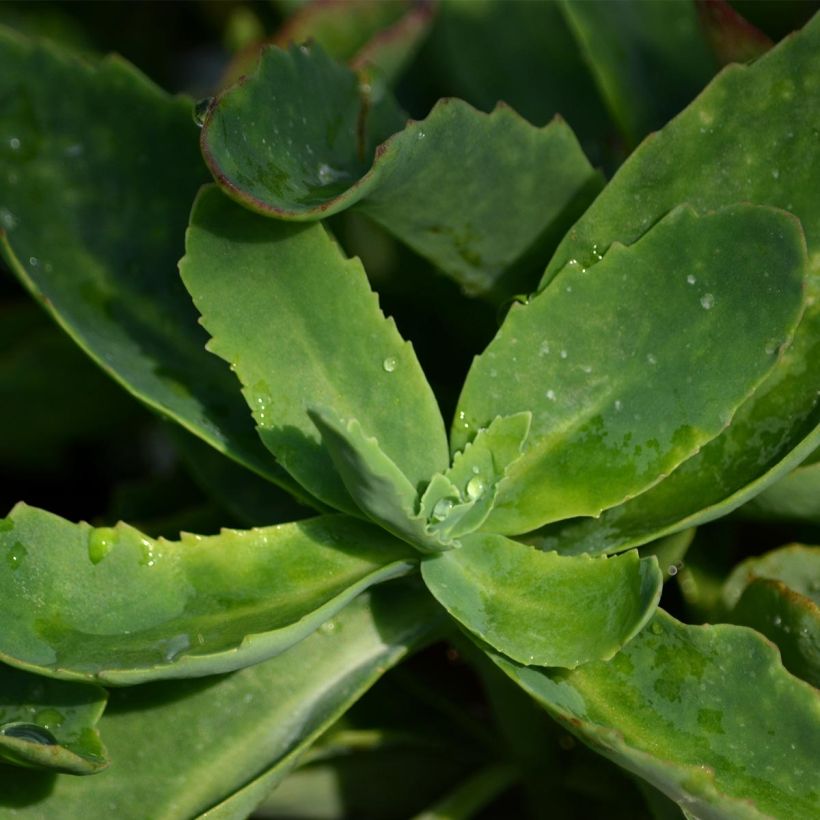

Flowering
Foliage
Plant habit
Botanical data
Sedum
spectabile
Septemberglut
Crassulaceae
Autumn Stonecrop, Ice plant, Showy Stonecrop, Butterfly Stonecrop
Cultivar or hybrid
Other Sedum
Planting and care
Plant Sedum spectabile 'Septemberglut' in ordinary, dry, calcareous soil. It must be well-drained to protect the roots from the cold moisture of winter. It tolerates clay soils in regions with dry winters. It must be planted in the sun. This plant is very hardy once established (-15°C (5°F)). It still needs moisture during the growing period. In pots, provide a bed of gravel for drainage. Cut back the clump in winter when it is dry.
Planting period
Intended location
Care
-
, onOrder confirmed
Reply from on Promesse de fleurs
Summer flowering perennials
Haven't found what you were looking for?
Hardiness is the lowest winter temperature a plant can endure without suffering serious damage or even dying. However, hardiness is affected by location (a sheltered area, such as a patio), protection (winter cover) and soil type (hardiness is improved by well-drained soil).

Photo Sharing Terms & Conditions
In order to encourage gardeners to interact and share their experiences, Promesse de fleurs offers various media enabling content to be uploaded onto its Site - in particular via the ‘Photo sharing’ module.
The User agrees to refrain from:
- Posting any content that is illegal, prejudicial, insulting, racist, inciteful to hatred, revisionist, contrary to public decency, that infringes on privacy or on the privacy rights of third parties, in particular the publicity rights of persons and goods, intellectual property rights, or the right to privacy.
- Submitting content on behalf of a third party;
- Impersonate the identity of a third party and/or publish any personal information about a third party;
In general, the User undertakes to refrain from any unethical behaviour.
All Content (in particular text, comments, files, images, photos, videos, creative works, etc.), which may be subject to property or intellectual property rights, image or other private rights, shall remain the property of the User, subject to the limited rights granted by the terms of the licence granted by Promesse de fleurs as stated below. Users are at liberty to publish or not to publish such Content on the Site, notably via the ‘Photo Sharing’ facility, and accept that this Content shall be made public and freely accessible, notably on the Internet.
Users further acknowledge, undertake to have ,and guarantee that they hold all necessary rights and permissions to publish such material on the Site, in particular with regard to the legislation in force pertaining to any privacy, property, intellectual property, image, or contractual rights, or rights of any other nature. By publishing such Content on the Site, Users acknowledge accepting full liability as publishers of the Content within the meaning of the law, and grant Promesse de fleurs, free of charge, an inclusive, worldwide licence for the said Content for the entire duration of its publication, including all reproduction, representation, up/downloading, displaying, performing, transmission, and storage rights.
Users also grant permission for their name to be linked to the Content and accept that this link may not always be made available.
By engaging in posting material, Users consent to their Content becoming automatically accessible on the Internet, in particular on other sites and/or blogs and/or web pages of the Promesse de fleurs site, including in particular social pages and the Promesse de fleurs catalogue.
Users may secure the removal of entrusted content free of charge by issuing a simple request via our contact form.
The flowering period indicated on our website applies to countries and regions located in USDA zone 8 (France, the United Kingdom, Ireland, the Netherlands, etc.)
It will vary according to where you live:
- In zones 9 to 10 (Italy, Spain, Greece, etc.), flowering will occur about 2 to 4 weeks earlier.
- In zones 6 to 7 (Germany, Poland, Slovenia, and lower mountainous regions), flowering will be delayed by 2 to 3 weeks.
- In zone 5 (Central Europe, Scandinavia), blooming will be delayed by 3 to 5 weeks.
In temperate climates, pruning of spring-flowering shrubs (forsythia, spireas, etc.) should be done just after flowering.
Pruning of summer-flowering shrubs (Indian Lilac, Perovskia, etc.) can be done in winter or spring.
In cold regions as well as with frost-sensitive plants, avoid pruning too early when severe frosts may still occur.
The planting period indicated on our website applies to countries and regions located in USDA zone 8 (France, United Kingdom, Ireland, Netherlands).
It will vary according to where you live:
- In Mediterranean zones (Marseille, Madrid, Milan, etc.), autumn and winter are the best planting periods.
- In continental zones (Strasbourg, Munich, Vienna, etc.), delay planting by 2 to 3 weeks in spring and bring it forward by 2 to 4 weeks in autumn.
- In mountainous regions (the Alps, Pyrenees, Carpathians, etc.), it is best to plant in late spring (May-June) or late summer (August-September).
The harvesting period indicated on our website applies to countries and regions in USDA zone 8 (France, England, Ireland, the Netherlands).
In colder areas (Scandinavia, Poland, Austria...) fruit and vegetable harvests are likely to be delayed by 3-4 weeks.
In warmer areas (Italy, Spain, Greece, etc.), harvesting will probably take place earlier, depending on weather conditions.
The sowing periods indicated on our website apply to countries and regions within USDA Zone 8 (France, UK, Ireland, Netherlands).
In colder areas (Scandinavia, Poland, Austria...), delay any outdoor sowing by 3-4 weeks, or sow under glass.
In warmer climes (Italy, Spain, Greece, etc.), bring outdoor sowing forward by a few weeks.

































